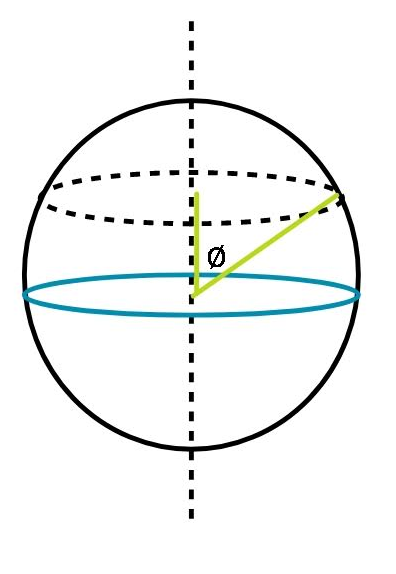
If the spinning speed of the earth is increased, then the weight of the body at the equator.
A. does not change
B. doubles
C. decreases
D. increases
Answer
507k+ views
Hint: The weight of the body in the absence of rotational motion is mg. This downward force mg is subjected to changes if centripetal force acts too. Velocities of bodies differ if their distances are different from the axis.
Complete step by step answer:

If the earth were not spinning, the weight of the body would have been mg. The earth rotating about its polar axis will make the body undergo a circular motion too. Suppose the object is present at an angle
Canceling the m,
In the question it has been asked to find what happens to the g when our object is at the equator. So, we are given
This clearly helps us see that the object at the equator will have a g' that is smaller than the actual g. Therefore the correct answer is option (C). The weight of the body decreases at the equator.
So, the correct answer is “Option C”.
Note:
To clear up the formula, consider drawing two perpendicular axes at the point where the object is present. Now, see what angle the centripetal force makes with these axes. mg will be always directed towards the centre of the earth, no matter where it is present and centripetal force points out from the circle that the object makes.
Complete step by step answer:

If the earth were not spinning, the weight of the body would have been mg. The earth rotating about its polar axis will make the body undergo a circular motion too. Suppose the object is present at an angle
Canceling the m,
In the question it has been asked to find what happens to the g when our object is at the equator. So, we are given
This clearly helps us see that the object at the equator will have a g' that is smaller than the actual g. Therefore the correct answer is option (C). The weight of the body decreases at the equator.
So, the correct answer is “Option C”.
Note:
To clear up the formula, consider drawing two perpendicular axes at the point where the object is present. Now, see what angle the centripetal force makes with these axes. mg will be always directed towards the centre of the earth, no matter where it is present and centripetal force points out from the circle that the object makes.
Recently Updated Pages
Master Class 11 Economics: Engaging Questions & Answers for Success

Master Class 11 Business Studies: Engaging Questions & Answers for Success

Master Class 11 Accountancy: Engaging Questions & Answers for Success

Master Class 11 English: Engaging Questions & Answers for Success

Master Class 11 Computer Science: Engaging Questions & Answers for Success

Master Class 11 Maths: Engaging Questions & Answers for Success

Trending doubts
Which one is a true fish A Jellyfish B Starfish C Dogfish class 11 biology CBSE

State and prove Bernoullis theorem class 11 physics CBSE

1 ton equals to A 100 kg B 1000 kg C 10 kg D 10000 class 11 physics CBSE

In which part of the body the blood is purified oxygenation class 11 biology CBSE

One Metric ton is equal to kg A 10000 B 1000 C 100 class 11 physics CBSE

Difference Between Prokaryotic Cells and Eukaryotic Cells




